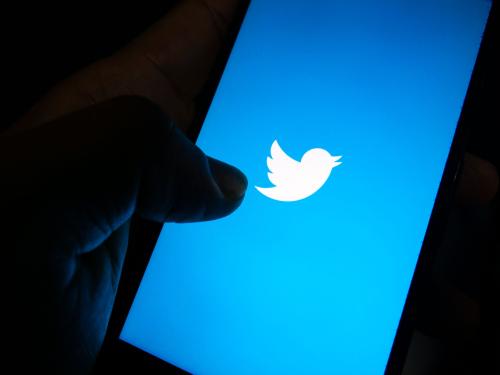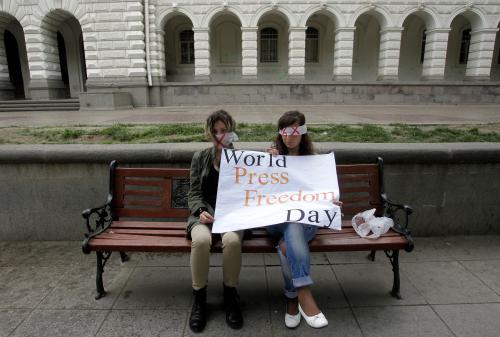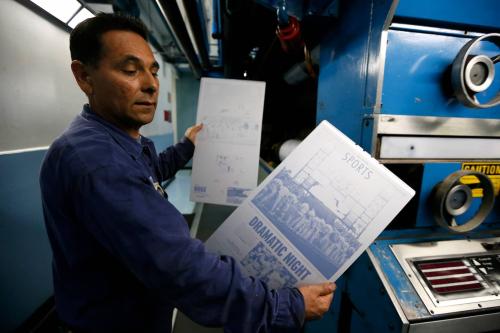This week, CNN decided to delay broadcasting White House Press Secretary Sean Spicer’s first official press briefing. By doing so, the network consciously decided to evaluate the contents of the briefing before airing it. This decision is a prime example of how news companies can use a science-based approach to combat the epidemic of fake news.
Fake news is everywhere. With its natural companion, alternative facts, we are barraged with stories that simply defy reality, whether it be the size of the crowd on Inauguration Day or assertions that vaccines cause autism despite a scientific consensus that states otherwise. These falsities demonstrate textbook social psychology. They have sticking power that is hard to overturn. Why?
In a 2011 study published in the journal Media Psychology, psychologists Melanie Green and John Donahue give a small window into the human psyche that explains why fake news is so powerful. The authors asked two questions: (1) How do we respond when we learn someone has misled us, and (2) do we change our beliefs and attitudes when we find out that something we read is fake?
The researchers used random assignment to place people in one of four conditions. Everyone was asked to read a narrative. One group was informed from the beginning that the narrative was false. The second and third groups were told—only after reading the story—that the narrative was false and informed that the problem was either (1) an accidental error, or (2) intentional deception. The fourth and final group was not given any reason to doubt the veracity of the story.
The findings shed light on the impact of fake news. All readers who learned that they were provided with false information responded negatively to the information source. But, despite learning after the fact that this information was false and even being upset when they learned this, readers continued to be influenced by the contents of the narrative. The story changed participants’ attitudes and this attitude change persisted even after they learned that they had been deliberately mislead.
Fact checkers can meticulously tally the number of “Pinocchio” points for each deceitful article, but this tally is inherently limited in its ability to undo the attitude changes evoked when readers first encounter a story.
This finding is important for all of us living in a seemingly post-truth society. It suggests that once a story is out in the open, it may be too late to retract it or blunt its influence. Fact checkers can meticulously tally the number of “Pinocchio” points for each deceitful article, but this tally is inherently limited in its ability to undo the attitude changes evoked when readers first encounter a story. How, then, can we neutralize the influence of fake news?
Using psychological science as a base, there might be a way around the problem. Post-hoc reviews of inaccurate information will rarely, if ever, be able to negate the damage fake information has already made. But there is a way to preemptively discredit those known for sharing inaccurate information and the stories they spin before their messages are broadcast to the public.
As a best practice, we should resist the temptation to publish statements and tweets before we fact check. Rather than focusing on the facts of each statement after they are delivered to the public, journalists can preserve the integrity of the news by delaying the presentation of questionable statements until they have the ability to credit or discredit them. This would allow news headlines to clearly label the accuracy of supposed news.
Admittedly, this strategy might be easier for print journalism, which has the benefit of operating with editorial delay, than for online journalism or live television news. But as demonstrated by CNN’s decision not to live broadcast White House Press Secretary Sean Spicer’s Saturday briefing, the cable news industry can similarly sever direct access of those who spew falsehoods to the ears of those who will unwittingly come to believe them. And the media can hold off on commenting—and even sharing without comment—until fact checking has taken place. In an era of round-the-clock reporting, this is becoming ever more important.
We are at a point in history where we risk blurring the lines between objective information and both fantasy and propaganda. It is imperative that the media preserve its integrity and again assert itself as the protective gatekeeper of real news. To do so, we will need to develop new strategies that balance speed with integrity. News agencies must not lose their role as a first source of information, but if in that haste they deliver preliminarily unchecked information, those who aim to deceive the public will have social psychology on their side.






Commentary
What science tells us about how to combat fake news
January 27, 2017